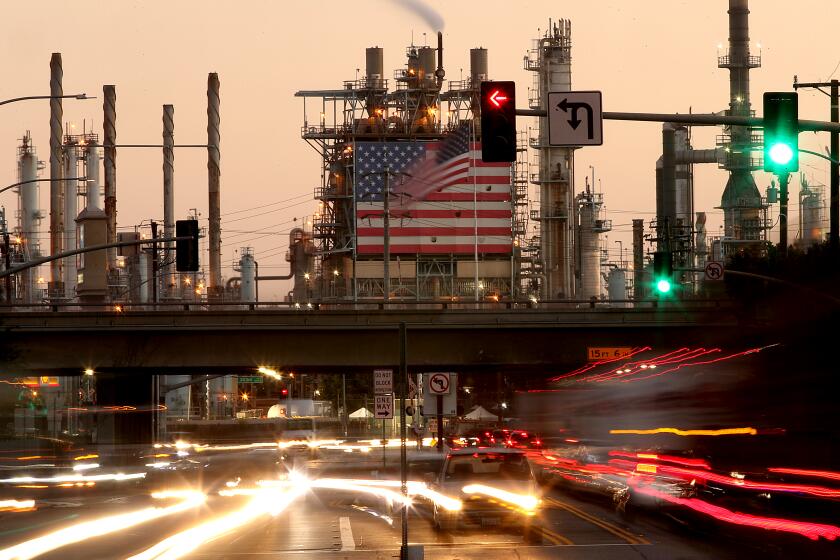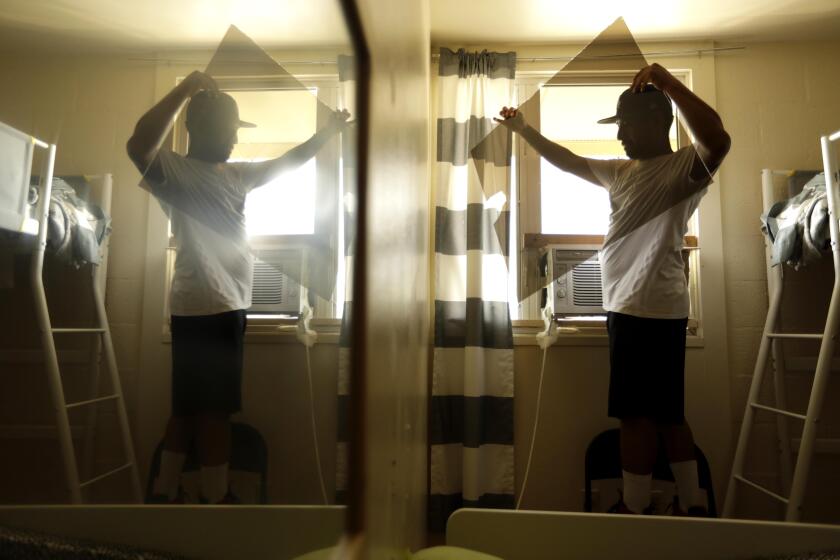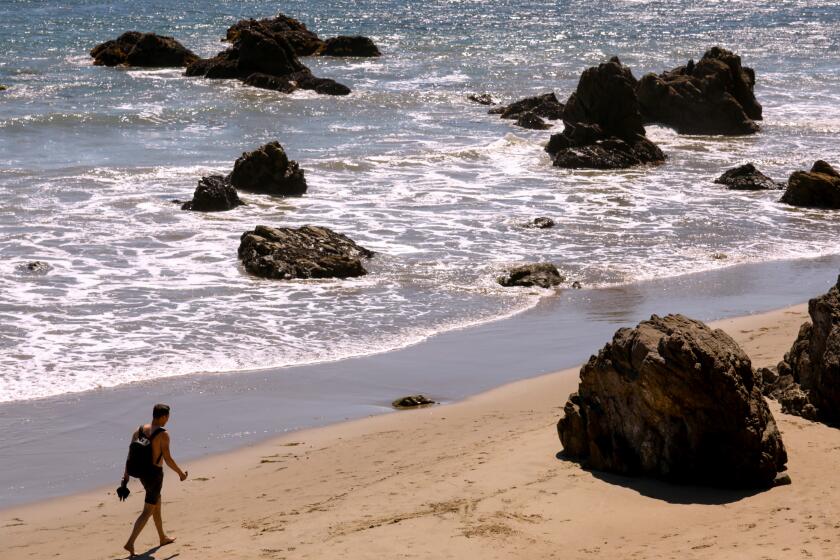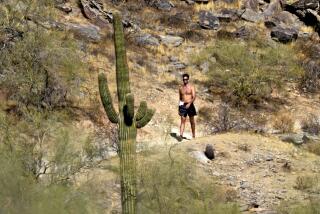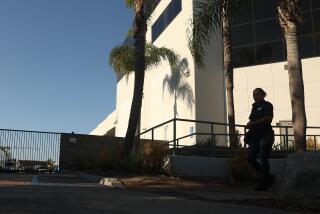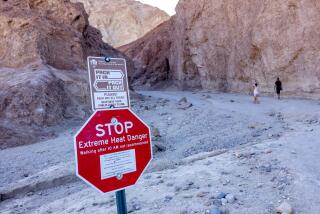Editorial: Deadly heat shouldn’t be a curiosity. It’s a disaster and a tragedy
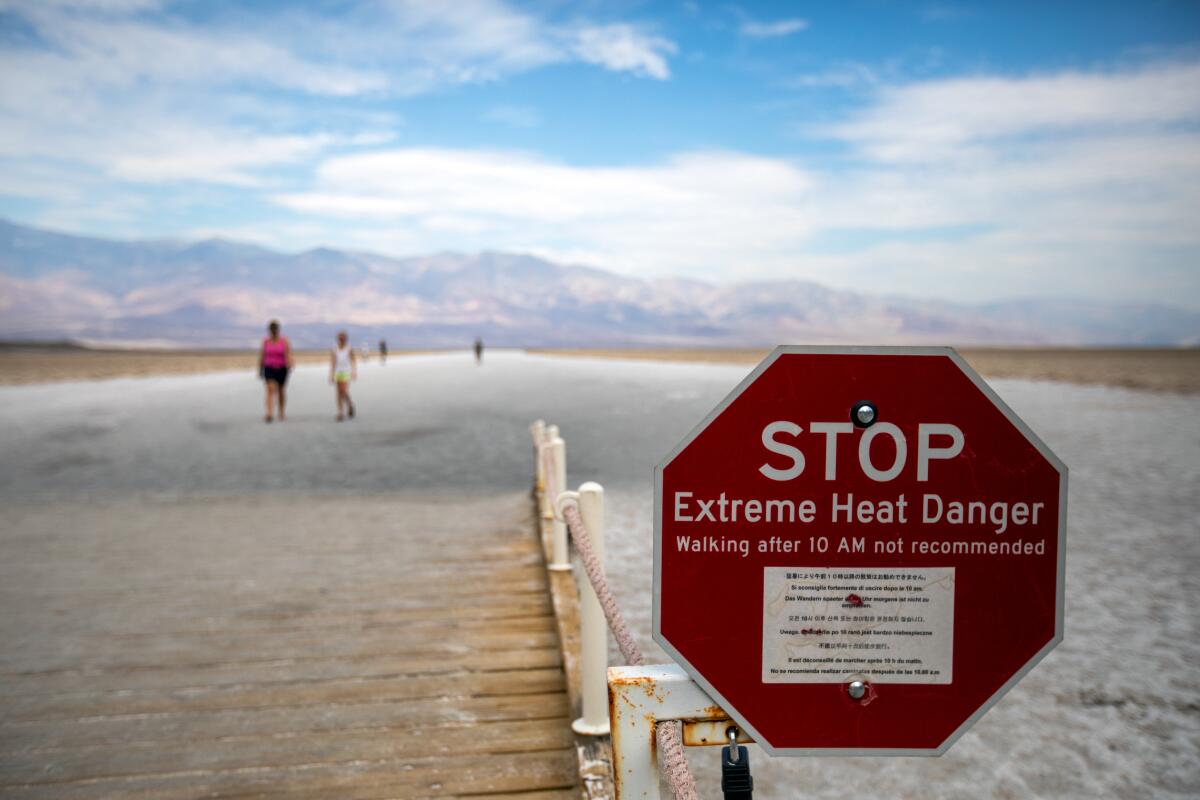
- Share via
Visitors are making perilous trips to California’s Death Valley as temperatures climb to within a few degrees of the highest on record. And there’s no doubt it takes a certain breed to trek into some of the worst heat humanity has known.
But as this miserable heat persists, with July poised to be the hottest month ever recorded on Earth, I found myself thinking about why some people are fixated on experiencing these temperature extremes, even if vicariously through a news story or a photo next to a practically melting thermometer.
It’s becoming clearer to some environmental leaders that fossil fuel companies have no real plans to change in response to the climate crisis. The only way forward is without them.
It’s understandable that the thrill-seekers among us would be drawn to places like Death Valley National Park, where temperatures in recent days have reached 129 degrees during the day, and remained as high as 120 degrees after midnight, to feel the furnace-like blast of hot air firsthand and experience how it tests the limits of human survival.
But these are life-threatening conditions, as was sadly demonstrated at the park Tuesday with the death of a 71-year-old hiker. And to me, such extreme temperatures should be seen less as a curiosity than a disaster and a tragedy.
Among the weather-related hazards made worse by climate change, extreme heat is the No. 1 killer, responsible for an estimated 3,900 deaths in California from 2010 to 2019. The heat that has smothered the Southwest and other parts of the U.S. for more than two weeks has inflicted a widespread toll, especially on the elderly, outdoor workers and those without air conditioning.
How can city officials help save lives during heat waves? Make cooling a requirement for habitation, like it is already is for heating during cold weather.
Climbing temperatures in places like Death Valley are not some kind of natural wonder for a bucket list, like seeing a total solar eclipse or climbing Mt. Everest. They are part of a spiraling, unnatural human disaster caused by our own ongoing pollution of the atmosphere that sustains life on this planet.
California has long been a land of extremes, swinging from severe drought and destructive wildfires to floods and landslides. The lowest point in North America, Death Valley’s Badwater Basin, is just 135 miles from the highest point in the lower 48 states, Mt. Whitney. We have the world’s biggest, tallest and oldest trees. But climate change is amplifying California’s boom-bust cycle so much that our past range of experience grows less relevant by the year.
Instead of working out a plan to help visitors find beaches, Malibu and a local agency are locked in a standoff over directional signs to Lechuza Beach that the city say didn’t have the proper permits.
This summer — even with extraordinary heat — is likely to be one of the coolest of the rest of your life. As climate scientist Michael Mann put it earlier this summer, “it’s a ‘new abnormal’ and it is now playing out in real time — the impacts of climate change are upon us in the form of unprecedented, dangerous extreme weather events.”
It won’t begin to change until we stop burning fossil fuels. Until then, we’ll have no choice but to get used to heat that is at once frighteningly extreme and no longer so remarkable.
More to Read
A cure for the common opinion
Get thought-provoking perspectives with our weekly newsletter.
You may occasionally receive promotional content from the Los Angeles Times.
